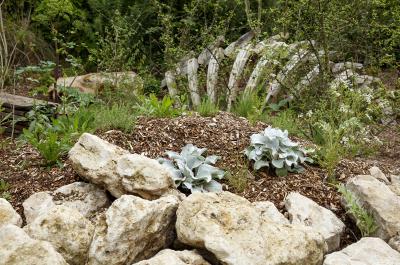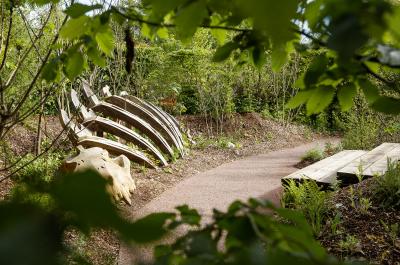15. Carcasse

The garden is where we can explore our role as a human within the biosphere, and how our thoughts are linked to the power of the living. In this enclosed, crafted, depleted space, abandoned by humans, only the scars of a past activity still remain, and the industrial wasteland with its dynamic ecosystem bears witness to this. Human intervention was phased out, giving way to a modest and wild plant life that began to spontaneously grow on the land. A gigantic creature, decayed over time, has also found its way here. The only remains are now the skeleton. Remnants of a temporary and majestic reincarnation of the powers of the living, this carcass symbolises the cyclical nature of matter, which will take on new embodiments over and over. The death of the monster does not just emphasise the end of a life, it also reveals a creative power, the power of regeneration. The decomposition of the creature and transformation of the matter have modified the nature of the soil, making it more enriched and nourished, progressively generating more bountiful vegetation. Death therefore becomes a hub for life that can develop and spread, gradually infecting the garden and perhaps even beyond.
DESIGNERS

MONsTR is an association of artists, designers and builders that was founded in August 2011 in Nantes. It was created with the goal of designing sculptures people can make use of, therefore making art more accessible, and something that can be experienced and touched. The creations from MONsTR are designed to be practical objects that viewers can interact with, mainly in public spaces, both indoors and outdoors. The MONsTR artworks can take the form of usable sculptures, play areas, urban and landscape developments and set design.
Guillaume Quemper is a landscaper who graduated from the École de Blois in 2003. His work combines the many activities involved in the design profession, some aspects of landscaping and the public domain with the Dérive collective, and some teaching work at the ESAJ and ENSP de Versailles landscaping schools. He tries to approach his projects with a catalysis of energies in mind and, together with his partners, strives to present realistic, frugal and effective proposals from an economic, technical and environmental point of view.


